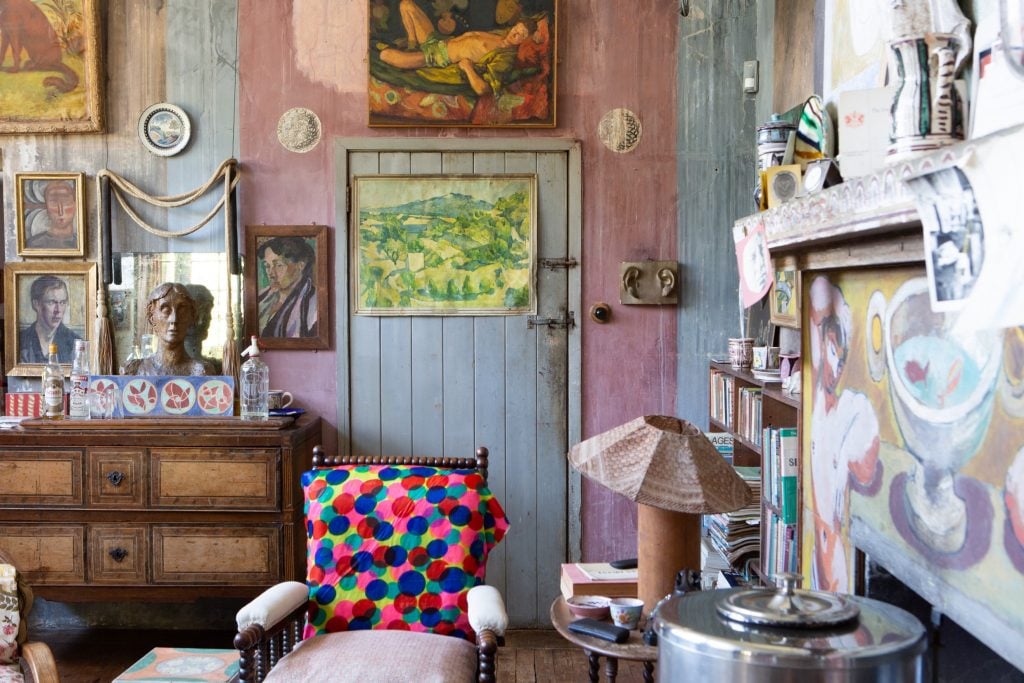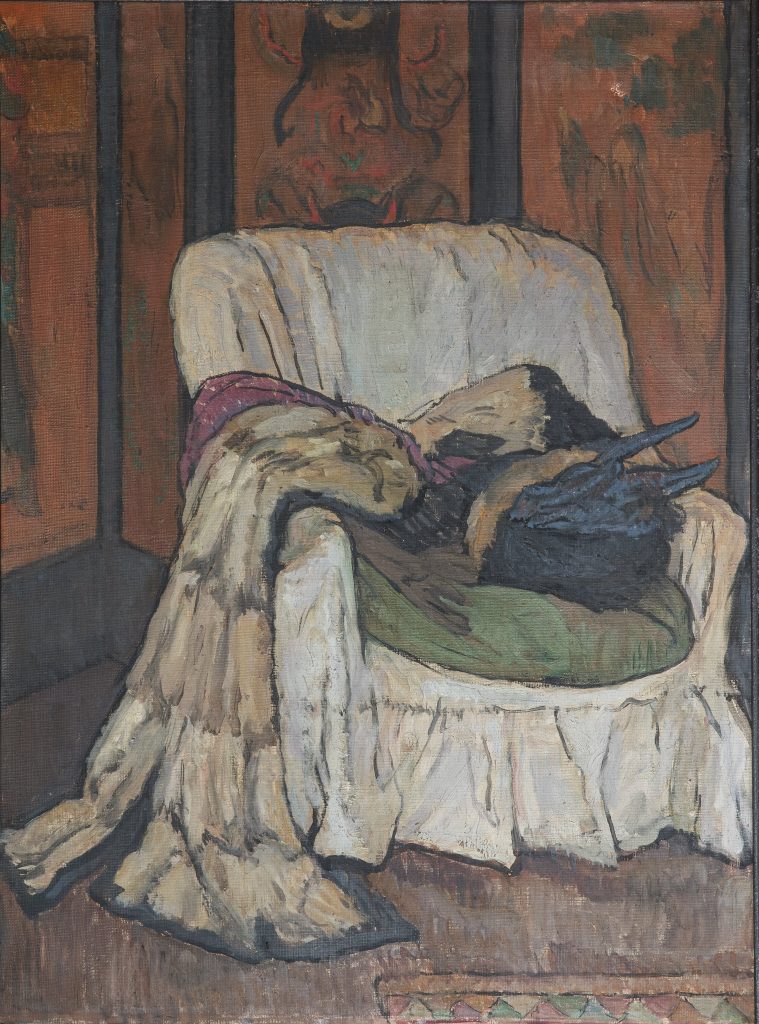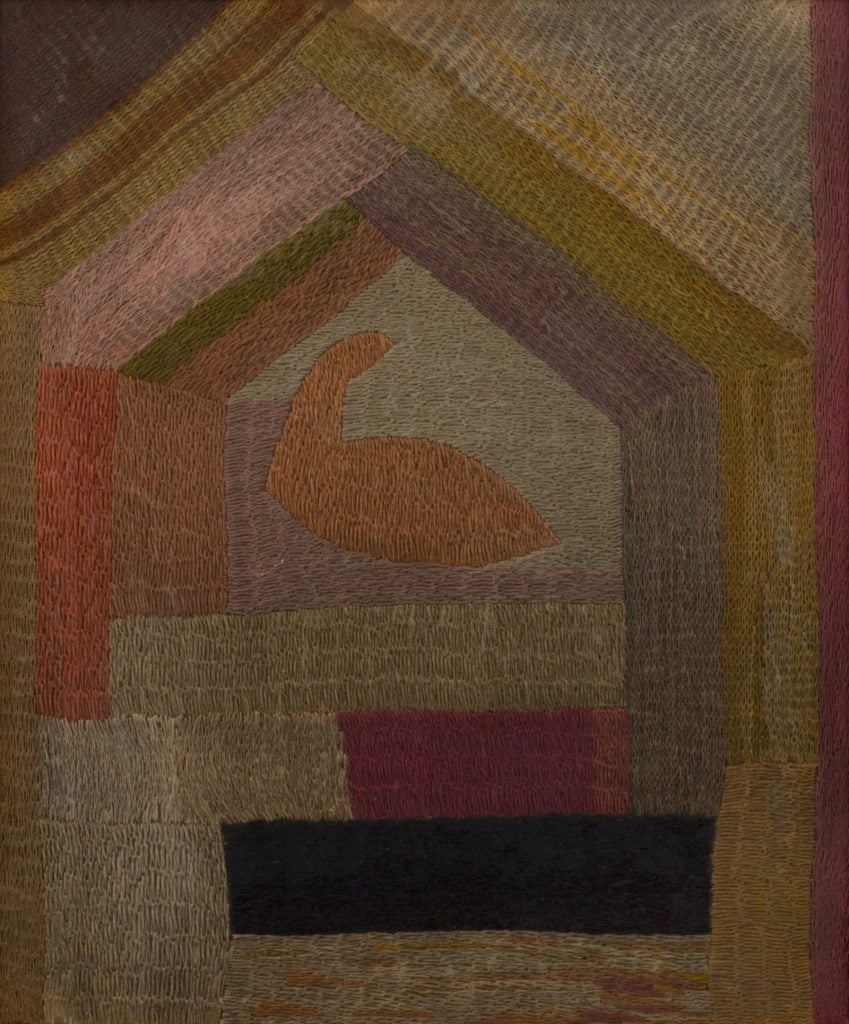Art World
A U.K. Museum Is on the Hunt for Hidden Artworks by the Famed Bloomsbury Group
Charleston wants to acquire 50 works by members of the 20th-century artist group.

Charleston wants to acquire 50 works by members of the 20th-century artist group.

Holly Black

Charleston might easily be mistaken for any other farmhouse hidden within the rolling green hills of the Sussex countryside. However, behind this tidy façade lies a treasure trove of modernism, filled not only with paintings and sculptures, but murals, textiles, and unusual objects, all of which signify the radical confluence of art, design, and unorthodox living that defined the Bloomsbury Group.
The country home of this thoroughly London set was settled in 1916 by artists Vanessa Bell and Duncan Grant, who were joined by Grant’s partner David Garnett, and a whole host of famous names including Virginia Woolf, Lytton Strachey and Roger Fry, over the years. Their fingerprints are everywhere, from the array of paintings that adorn the walls to the elaborately decorated mantlepiece that serves as the centerpiece of the artists’ studio. Bells’s sunhat still rests on her bed, as if she has only stepped out for a moment.
Since the house left private hands following Grant’s death, a charity was set up so that Charleston could remain perfectly preserved. It welcomes visitors to tour the rooms and gardens, and enjoy several purpose-built galleries showcasing contemporary art that resonates with the ethos of the group. The museum even opened a sister site in the neighboring town of Lewes last year, offering more opportunities to understand the group’s legacy in a contemporary context.

Vanessa Bell, The Cloak (1912). © the estate of Vanessa Bell. Courtesy of DACS 2024.
In 2030, this house museum will celebrate half a century as a public institution, which has led to the new project “50 by 50,” described as “an ambitious search for 50 of the most significant Bloomsbury group artist paintings still held in private collections.” The initiative has been launched with a display of key pieces that already reside within the Charleston collection, as well as newly secured works, at the London Art Fair.
According to the fair’s director Sarah Monk, Charleston’s collection “includes work by some of the most significant Modern British artists of the early 20th century; a core and much-loved part of our own DNA. Charleston is a deeply inspiring place with a history as colorful as the hand-painted wallpapers and furnishings that surround you. It’s a history which has huge resonances with what we equally look to create with the fair, as a meeting place for artists, writers, and thinkers to celebrate art and ideas.”
Among the most exciting pieces on display are The Cloak (1912) by Vanessa Bell, which was recently bequeathed to Charleston by a frequent visitor. The museum’s director Nathaniel Hepburn explained: “The best discoveries are the people who have paintings which have been in the family for a number of generations, but have never been publicly displayed or reproduced in books… Surprise discoveries happen all the time—I was in someone’s library in north London just before Christmas and saw a beautiful Vanessa Bell painting that used to hang in Duncan Grant’s bedroom throughout his life.”
In building what he terms as an “encyclopedic Bloomsbury collection” he hopes to shine a light on the lesser-known facets of the group’s oeuvre. This is not always the easiest undertaking, given that Bloomsbury’s design enterprise, the Omega Workshops, deliberately omitted artist signatures. Nevertheless, in pooling both curatorial and first-hand knowledge, it is possible to connect the dots.

Duncan Grant, embroidered fire screen (1915-20). Collection of The Charleston Trust. © the estate of Duncan Grant, courtesy of DACS 2024.
For example, another key find takes the form of an embroidered fire screen designed by Duncan Grant. Hepburn explained: “[It] was possibly commissioned by John Maynard Keynes and stayed within the Keynes family until quite recently. The design for the work has been in the collection of Charleston for many years and Grant used to hang it in his studio, pinned to the door… It is dated 1916, though the newspapers that Grant used in the collage are from 1914, so it may have been incorrectly dated by Grant later, something that often happened.”
Hepburn hopes that in bringing Charleston’s pieces to the fair, he might well pique the interest of collectors who could have a Bloomsbury work hidden away at home. He said, “We are confident that many people with a stunning Bell or Grant work would love for it to permanently bequeathed to the charity when they are no longer able to enjoy living with it.”
London Art Fair is on view at the Business Design Centre, 52 Upper Street, London, 17–21 January.
More Trending Stories:
Art Dealers Christina and Emmanuel Di Donna on Their Special Holiday Rituals
Stefanie Heinze Paints Richly Ambiguous Worlds. Collectors Are Obsessed
Inspector Schachter Uncovers Allegations Regarding the Latest Art World Scandal—And It’s a Doozy
Archaeologists Call Foul on the Purported Discovery of a 27,000-Year-Old Pyramid
The Sprawling Legal Dispute Between Yves Bouvier and Dmitry Rybolovlev Is Finally Over